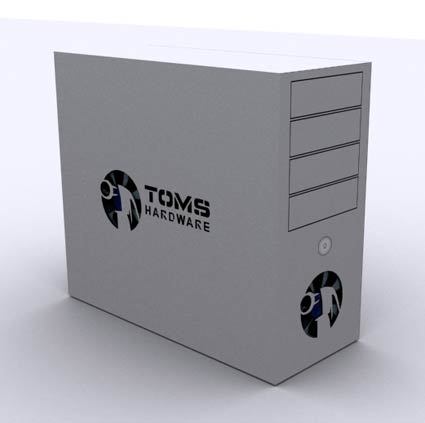Making a custom PC enclosure with Protocase
Review Of Design Process
When I was asked to work with Protocase to design a completely unique PC enclosure, I was immediately intrigued by the idea. Here was an opportunity to truly create something different, to show a little creativity and watch something transform from an idea into the tangible. Once I came up with a unique idea for a THG-themed cylindrical case, I couldn't wait to take it to the next step!
Later, once I began to think about all of the variables that have to be taken into account when designing something that has to function properly, I began to feel a little intimidated by the project. Sure, I've been putting PCs together for over a decade, but what do I really know about the nuances of PC case design? What are the little things that I was bound to forget?
After my first glance at the Protocase website, I really started to sweat. Don't misunderstand me: the Protocase site offers excellent in-depth and informative articles on enclosure design, fasteners and silk screening. There are even links to a free download of Protocase's in-house design tool called Protocase Designer .
For an actual engineer, all of these tools must be wonderful; I can imagine that with the right skill set, a person could mold their brainchild conveniently on their desktop PC at home. But I'm no engineer, so I became even more intimidated. What had I gotten myself into? I have a background with a little CAD program experience, but mostly I'm a 3D visualization guy, not an engineer.
Not knowing even where to start, I decided to abandon my cylindrical THG dream case and go for something a little more realistic. The good people at Protocase provided me with a simple ATX case template, so I contented myself with creating a pattern for cutting the THG logo into the side and front of the case. I made a 3D model of the idea and rendered a prototype image in 3DStudio MAX; I thought, hey, this is no revolution in PC enclosures, but it's not so bad after all.
Our first not-so-lofty try at a custom PC design
Pretty nifty, huh? I thought so, and decided it was time to submit this humble case design to Christa, my contact at Protocase, for manufacturing.
Get Tom's Hardware's best news and in-depth reviews, straight to your inbox.
Current page: Review Of Design Process
Prev Page Introduction Next Page Review Of Design Process, ContinuedDon Woligroski was a former senior hardware editor for Tom's Hardware. He has covered a wide range of PC hardware topics, including CPUs, GPUs, system building, and emerging technologies.
